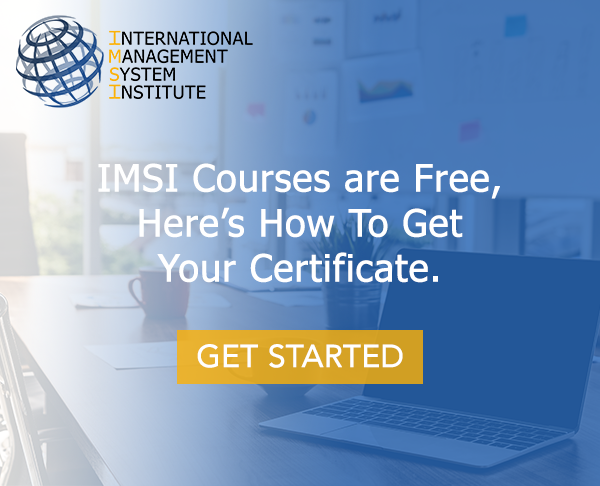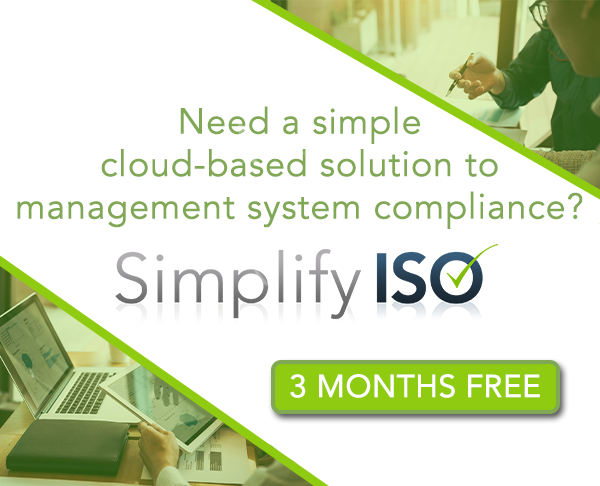ISO 9001 Basics Lesson #5 – Clause 9: Measurement
The video below offers an explanation of Clause 9. Watch the video and use your pdf workbook to follow along with different action steps to help you document how your organization meets each requirement.
Below is a short summary of each of the subclauses that are discussed at length in the video.

Clause 9 Performance Measurement
Clause 9.1 – General – a description of measurement requirements:
- What will you measure?
- How will you take these measurements?
- When will you do it?
- When will you analyze the results, and what happens then?
You want to make sure that you’re meeting customer (and other) requirements. Process Approach:
Input –> Process –> Output
$1———$10———$100
Clause 9.1.3 has some specific things to analyze:
a) Conformity of products and services mentioned above – 8.5.1 c)
b) Customer satisfaction – 8.2.1 c), 9.1.2
c) Performance and effectiveness of the Management System – Internal audits, external audits, customer audits, process audits, product (or service) audit, line audit, regulatory body inspections and any other activity that gives you feedback on how well the system is working (meeting objectives and customer requirements) You can track non- conformances to get a sense of how well the system is working. Do root cause analysis to find out why non-conformances occur and implement corrective actions to prevent recurrence. More about this in Clause 10 ‘Improvement’. Opportunities For Improvement (OFIs) are helpful, too. Turnaround time is a good measure as well.
d) Effectiveness of planning. This is indicated by how many ‘surprises’ are occurring. Better planning usually leads to smother operation, fewer non-conformances and happier customers. Make sure you have the right team assembled. Planning leads to smoother workflow and more profit.
e) Effectiveness of actions relating to assessing risk and opportunities (Clause 6.1) – like #4, the better this is, the fewer ‘issues’ you’ll have.
f) Supplier performance – not ALL suppliers, but a cross-section is useful. Keep the good ones, ditch the bad ones if you can. Sometimes a supplier is ‘the only game in town’ and you have to use them. Some organizations also do an activity called ‘supplier development’ and try to get their suppliers to perform better. Win-win.
Suppliers can keep you informed about trends in your industry that you might not hear about.
g) Opportunities For Improvement (OFIs). This can be the focus of your internal audits.
These appear during audits and inspections. The more, the merrier – improvements, when they are done effectively, lead to higher profit. In the case of the Public service, improvements can lead to ‘stay within the budget’.
Clause 9.2 Internal Audit
Clause 9.2.1
Not everyone loves doing them, but they can bring a lot of value to an organization.
You have to have a schedule – it needs to consider the importance of processes, changes to your system and results from previous audits.
Auditors have to be competent, but you decide what that means – put the ‘competence’ requirements into your Internal Audit Procedure.
Auditors have to be ‘objective’ so that the audit activity produces valid results. They will not want to be auditing their own work – they can audit in their own department, just not their own work.
Ask about our auditing course offerings!
You choose the time frame for audits – just make sure that you audit your entire system annually to make sure it’s paying dividends and helping you keep your customers happy. It could be done on any schedule that suits you: all at once, monthly, quarterly, semi-annually, weekly, daily – any interval that will help you to improve your system.
Results are reported to Top Management in an ‘audit report’.
Audit plans need and Objective, a Scope and some Criteria to audit against.
Objectives could include: a production line, quality objectives, ISO 9001.
Scope: over the course of a year, your Registrar will likely want you to audit your entire system.
You’ll see a built-in ‘audit report’ on our platform.
Clause 9.3 Management Review
Clause 9.3.1 General – For Management to review the effectiveness of the Management System
Look at Quality Policy (5.2). Internal and External issues (Clause 4.1, Context), Interested Parties (4.2), Minutes from previous reviews.
Clause 9.3.2 – Inputs to Management Review
Clause 9.3.2 has some specific things to analyze:
- Conformity of products and services mentioned above – 8.5.1 c)
- Customer satisfaction – 8.2.1 c), 9.1.2
- Performance and effectiveness of the Management System – Internal audits, external audits, customer audits, regulatory body inspections and any other activity that gives you feedback on how well the system is working (meeting objectives and customer requirements).
- Effectiveness of planning. (shown by non-conformances and corrective actions) This is indicated by how many ‘surprises’ are occurring. Better planning usually leads to smother operation and fewer non-conformances.
- Effectiveness of actions relating to assessing risk and opportunities – like #4, the better this is, the fewer ‘issues’ you’ll have. Top management is required in clause 5.1.1 d)
- Supplier performance (external providers) – not ALL suppliers, but a cross-section is useful. Keep the good ones, ditch the bad ones if you can. Sometimes a supplier is ‘the only game in town’ and you have to use them. Some organizations also do an activity called ‘supplier development’ and try to get their suppliers to perform better. Win-win.
- Opportunities For Improvement (OFI). These appear during audits and inspections. The more, the merrier – improvements, when they are done effectively, lead to higher profit. In the case of the Public service, improvements can lead to ‘stay within the budget’.
Clause 9.3.3 –Outputs from Management Review
This is the documented blueprint for ‘next steps’ for the organization if they’re using ISO as a tool to run their business.
Specific outputs are, at least:
- Opportunities for Improvement
- Need for changes to the system
- An assessment of the adequacy of your resources


